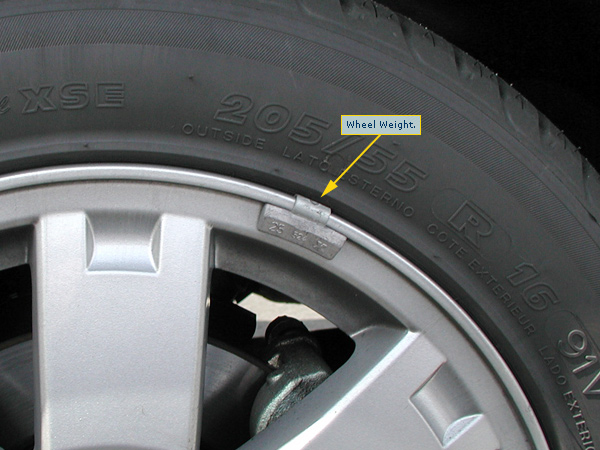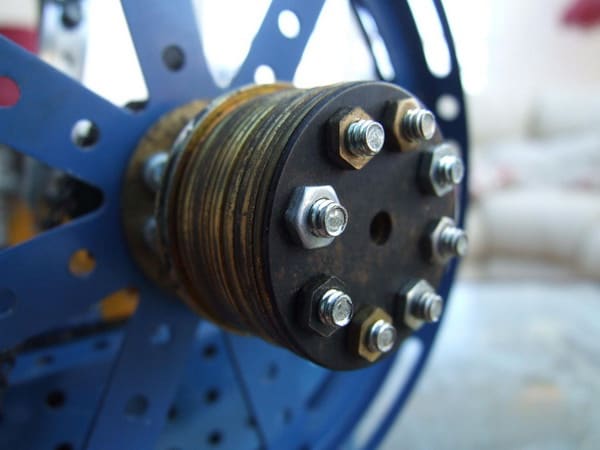Engine balancing
Last Updated on July 22, 2024 by Mutiara
With all the rumbling, vibrations, beating, and banging happening it can sometimes be easy to forget that an engine is a precision piece of equipment. With all the moving pieces finely tuned and move with the precision of a Swiss watch.
That’s a good thing though. Because of the rpm being turned by race engines, any unbalance can have detrimental results. Two decades ago, if one piston and rod combination was heavier than the rest, it usually wasn’t a problem. The entire mass of the rotating assembly was so much that a difference of 10 or more grams didn’t make much difference. Today component manufacturers are pushing the design limits of high-strength and low-weight components; a piston and rod combination that is just a few grams too heavy or light can mean ruined bearings, sheared flywheel bolts, and worse. That’s why properly balancing your race engine’s rotating mass is more important than ever before.
The difficulty with understanding how to balance an engine’s rotating weight is this: Not all of it rotates. Yes, the crankshaft rotates, but don’t the pistons and part of the rods move up and down? So how do you balance it all out?
The answer is actually a very simple calculation. When calculating the weight that is to be attached to the crank, the rod bearings and the big end of the rod are considered rotating weight. The small end of the rod, piston, wrist pin, rings, and pin locks are all considered reciprocating weight.
Typically, 100 percent of the rotating weight and 50 percent of the reciprocating weight are added together to form the total for the bobweight. Some engine builders include four or five grams in the total to simulate the weight of oil clinging to the various parts. The bobweights are actual weights that are attached to the crank’s rod journals to simulate the weight of the rod/piston assembly. With the bob weights in place, the crank is ready to be spun on a balancing machine.
Overbalancing
If you have hung around engine shops, then you may have heard that a crank has been “overbalanced.” You may have even heard the phrase “underbalance,” but hopefully never in association with a hi-rpm racing engine. Overbalancing is when the percentage of the reciprocating weight is increased by a couple of percentage points when calculating the bobweight. The idea is that this reduces high-rpm vibrations.
Pistons and Rods
The first step in balancing an engine is weight-matching all the pistons and rods. To do this, all the components are weighed. The entire piston assembly, complete with rings and locks, can be weighed together, but the rods must be weighed in two stages. The small end and the big end of the rod must be weighed separately, since the small end falls under the reciprocating weight category while the big end is rotating weight.
The Crankshaft
When all the bob weights are correctly assembled and installed on the crank, a balancing machine can tell you exactly where on the crank weight needs to be either added or removed.
Now, compare the weights of the same components (for example, the smallend of the rods). If they don’t all weigh the same (within the range o f a gram), the heaviest rods must have material cut away until they are the weight of the lightest rod. The same goes for the pistons and large end of the rods.
Fortunately, this practice only applies if you are racing with stock components. Today, almost all race-quality aftermarket components come weight-matched. Other than a quick check on the scales to make sure everything is OK and determine your bobweights, there is nothing for you to do.
Once the pistons and rod ends are all equal, the bob weights can be determined. With the bobweights attached to the crank’s rod journals, a balance machine is used to specify exactly where the crank needs to be worked to bring it into balance. Weight is almost always added on the outermost throws because it makes the most difference in those locations.
A crank is brought into balance by either adding or removing weight ins pecific places. Since you don’t want to increase the dimensions of the crank’s counterweights, adding weight is done by drilling out holes in the counterweights that run parallel to the crank’s centerline and inserting slugs of “mallory metal.” Mallory metal is a tungsten alloy that is 1.5 times heavier than lead, and a little goes a long way when balancing a crank.
The other method is to reduce weight. Many shops do this by drilling holes into the ends of the counterweights. This works fine, except many engine builders feel that the unevenness created in the ends of the counterweights increases windage. Most prefers to turn the ends of the counter weights down in a lathe so that the outside diameter of the crank is actually reduced. Final adjustments are done with a hand grinder and a light touch. This takes more time, but the end result is a racing crank with a smoother outer surface.
Calculating Bob Weights
Calculating bob weights isn’t difficult, but it does require a little time at the scales. Here’s the complete list for determining your bobweights for zero-balancing a crank.
Rotating Weight
- Big end of rod (including fastening hardware)
- Bearing
- Oil (normally estimated at four grams)
Reciprocating Weight
- Piston
- Wrist pin
- Pin locks (if used)
- Small end of rod
- Piston rings
Bobweight = Rotating Weight + (Reciprocating Weight x .50)
Internal versus External Balancing
So far, all of our discussion on balancing has included only the crank, pistons, rods, and the other various pieces that go into those assemblies. This is known as an internally balanced engine. The other option, an externally balanced engine, also includes the flywheel and harmonic damper. In this situation, both the flywheel and damper are installed on the crank when it is dynamically balanced on a balancing machine. Instead of modifying the crankshaft to achieve balance, weights are welded to the flywheel and/or the damper.
An externally balanced engine runs just as well as an engine that has been internally balanced, but this method isn’t nearly as popular in racing. First, If the damper were to break or come off, the main bearings could be damaged in a very short period of time. Then, instead of replacing just the damper, you would be looking at a complete engine rebuild. Second, because both the damper and flywheel are integral to the engine’s balance, if either need to be replaced, the entire engine must be rebalanced. This isn’t necessary in an internally balanced engine.

